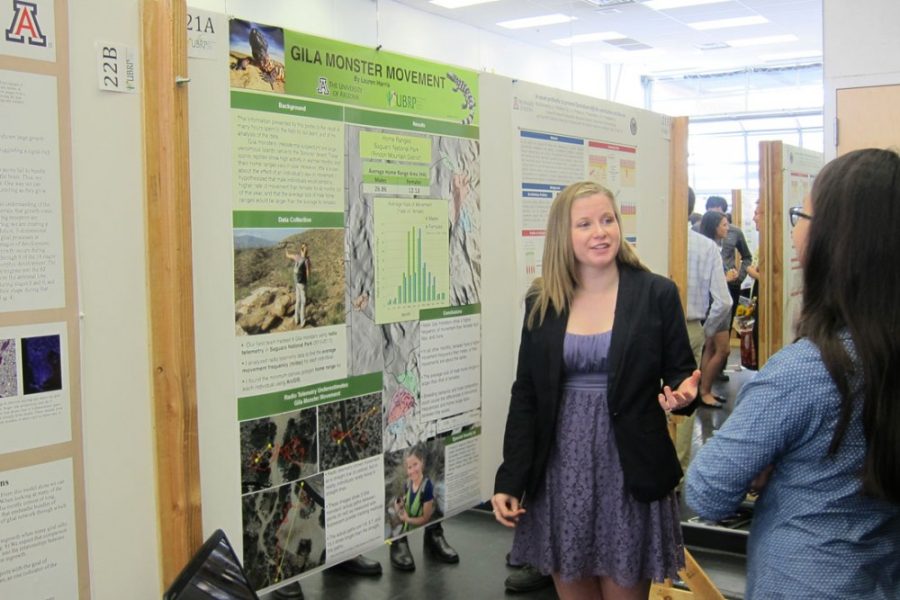Only at the Undergraduate Biology Research Program Conference can one find art, culture, science and family fun wrapped into a single event. Undergraduate science students will present their research at the upcoming 26th Annual UBRP Conference on Jan. 24 in the Stevie Eller Dance Theater from noon to 5:30 p.m.
UBRP is a summer scientific research program.
“The mission is to teach students science by involving them in research,” said Carol Bender, a distinguished outreach professor and director of UBRP.
Aanika Balaji, a first-year UBRP student, said the conference is the culmination of a student’s research from over the summer and academic year. The conference is a wonderful opportunity for students to present their research to the community, Balaji said. Oftentimes, the conference is the first poster presentation for participating students, such as for Balaji.
However, the conference is filled with more activities than just poster presentation.
“Last year, we started involving the public in hands-on science activities,” said Jennifer Cubeta, assistant director of UBRP. “We had an arthropod zoo for kids to look at big bugs. There were also marine creatures to look at and DNA extraction. These activities allow us to bring science to the community, and we will continue to do this again this year.”
The UBRP conference has a long tradition within the UBRP community, Bender said. Since the first group of students that joined UBRP in 1988, there has always been a conference, she said. Over 120 students will present in the forthcoming conference in a tradition that approximately 2,200 students have been apart of.
To initiate the 26th conference, Dr. Parmi Suchdev of Emory University will be the keynote speaker. His speech is titled “Hidden hunger: how investing pennies in nutrition can save millions.”
“[Dr. Suchdev’s] research is on childhood nutrition in developing countries,” Bender said. “He has conducted research in Kenya and Latin America. He has also been involved in promoting Sprinkles — a micronutrient powder — to address protein calorie malnutrition in kids.”
Bender said the conference is a means to get the public community excited about scientific research, given that the investigations are mostly conducted on taxpayers’ dollars. If the public does not understand, feels excluded or views science as an elite, exclusive club, that could mean trouble, Bender said. There are more scientific terms in biology than there are in French, making this conference practice for students to translate their research to broader public.
“[UBRP] changes your perspective on what it means to be a young developing scientist,” said Shaina Hasan, president of the UBRP Ambassadors Organization and a senior studying biochemistry and molecular and cellular biology. “This experience shows you how much you still have to learn, which motivates student inquiry about science.”
In addition, the conference is a great way for the Tucson community to learn what the students are researching at the UA, Hasan said.
“Science is only as important as the community who understands it,” she said, “otherwise there would not be any passion for the science that is being done.”
______
Follow John McMullen on Twitter.









